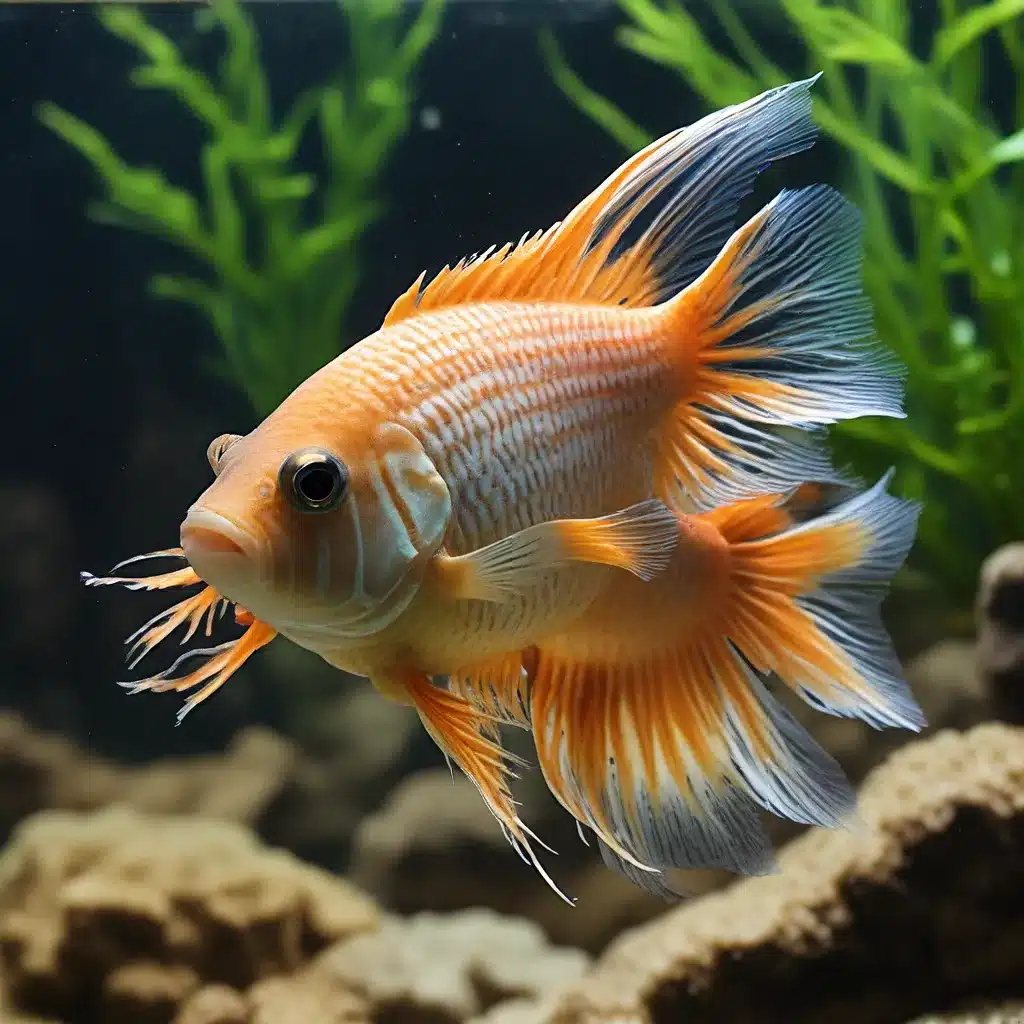
Exploring the Fascinating World of Aquarium Fish Behavior
As aquarium enthusiasts, we are captivated by the diverse and intriguing behaviors of the fish inhabitants in our underwater ecosystems. From colorful cichlids engaging in intricate courtship rituals to schooling tetras harmoniously navigating their environment, understanding the unique behaviors of our aquatic friends can unlock a deeper appreciation for the complex microcosms we’ve created. In this comprehensive guide, we’ll delve into the fascinating world of aquarium fish behavior, empowering you with the knowledge and insights to become a more attentive and observant aquarist.
Observing and Interpreting Fish Behavior
One of the joys of maintaining an aquarium is the opportunity to closely observe the behaviors of our finned companions. By carefully monitoring their actions, we can gain valuable insights into their health, social dynamics, and overall well-being. Start by taking the time to sit quietly in front of your aquarium and simply watch your fish. Pay attention to their swimming patterns, interactions with tankmates, and responses to environmental changes.
As noted on Reef2Reef, being an attentive observer is crucial for understanding your fish’s needs and ensuring their optimal care. Familiarize yourself with the typical behaviors of your specific fish species, such as feeding rituals, territorial displays, and spawning behaviors. This knowledge will help you identify any deviations from the norm, which could indicate potential health issues or environmental stressors.
Incorporating Aquascaping for Enrichment
The aquascaping of your aquarium can greatly influence the behavior and overall well-being of your fish. By strategically arranging plants, rocks, and driftwood, you can create an environment that caters to the natural instincts and preferences of your inhabitants. This not only enhances the visual appeal of your aquarium but also provides essential enrichment opportunities for your fish.
For example, Cichlids are known for their complex social structures and territorial behaviors. Incorporating ample hiding spots, caves, and rock formations can encourage natural breeding and spawning behaviors, as well as reduce aggression among individuals. Similarly, schooling fish like tetras and rasboras thrive in aquariums with open swimming areas and dense vegetation, allowing them to exhibit their natural schooling behaviors.
As discussed on Tannin Aquatics, the introduction of botanical materials, such as leaves and seed pods, can also have a significant impact on the aquarium environment and the behaviors of its inhabitants. These materials can influence water parameters, create microclimates, and provide foraging opportunities, all of which can contribute to a more natural and enriching experience for your fish.
Understanding the Influence of Water Parameters
The water parameters in your aquarium play a crucial role in shaping the behavior and overall well-being of your fish. Factors such as pH, temperature, dissolved oxygen, and water hardness can all have a profound impact on the physiology and social dynamics of your aquatic inhabitants.
For instance, soft, acidic water conditions, often found in blackwater environments, can trigger the natural spawning behaviors of certain fish species, such as discus and apistogramma. Conversely, hard, alkaline water may be more suitable for species like rift lake cichlids, which thrive in mineral-rich environments.
Monitoring and maintaining optimal water parameters is crucial for supporting the natural behaviors of your fish. Invest in reliable water testing kits and make gradual adjustments to ensure a stable and well-balanced aquarium ecosystem.
Incorporating Behavioral Enrichment
Beyond the physical environment, providing behavioral enrichment opportunities can greatly enhance the quality of life for your aquarium inhabitants. This involves introducing novel items, hiding spots, or foraging challenges that encourage natural behaviors and stimulate their natural instincts.
Consider adding floating plants, driftwood, or rock formations that create opportunities for your fish to explore, hide, and interact with their surroundings. Introduce live foods, such as brine shrimp or bloodworms, which can mimic their natural hunting and foraging behaviors. Observe how your fish respond to these enrichment activities and make adjustments to ensure they are engaging and stimulating.
Respecting the Needs of Unique Fish Species
It’s essential to understand and respect the unique behavioral characteristics of the individual fish species you keep in your aquarium. Different fish have varying social structures, territorial instincts, and environmental preferences, and ignoring these needs can lead to stress, aggression, and even health issues.
For example, bettas are known for their territorial and aggressive behaviors, especially towards other male bettas. Providing ample hiding spots and visual barriers can help reduce stress and minimize conflicts. Schooling fish, on the other hand, thrive in the presence of their own kind and may exhibit distress or stunted growth when kept in small groups.
As observed by Taimur Abdaal, even the introduction of new tankmates, such as shrimp and snails, can impact the behavioral dynamics within an established aquarium. Carefully research the specific needs and compatibility of each fish species before making additions to your aquarium to ensure a harmonious and stress-free environment.
Fostering a Holistic Approach to Aquarium Care
Ultimately, understanding and observing the behaviors of your aquarium fish is an essential aspect of providing comprehensive care and creating a thriving underwater ecosystem. By incorporating strategic aquascaping, maintaining optimal water parameters, and offering behavioral enrichment opportunities, you can unlock the secrets of your fish’s natural behaviors and foster a harmonious and engaging aquarium experience.
Remember, each aquarium is a unique microcosm, and the behaviors you observe will be a reflection of the delicate balance you’ve created. Embrace the journey of discovery, be an attentive observer, and continuously adapt your aquarium management practices to ensure the well-being and contentment of your finned companions. Unlock the secrets of your aquarium inhabitants and enjoy the fascinating world of aquarium fish behavior.

